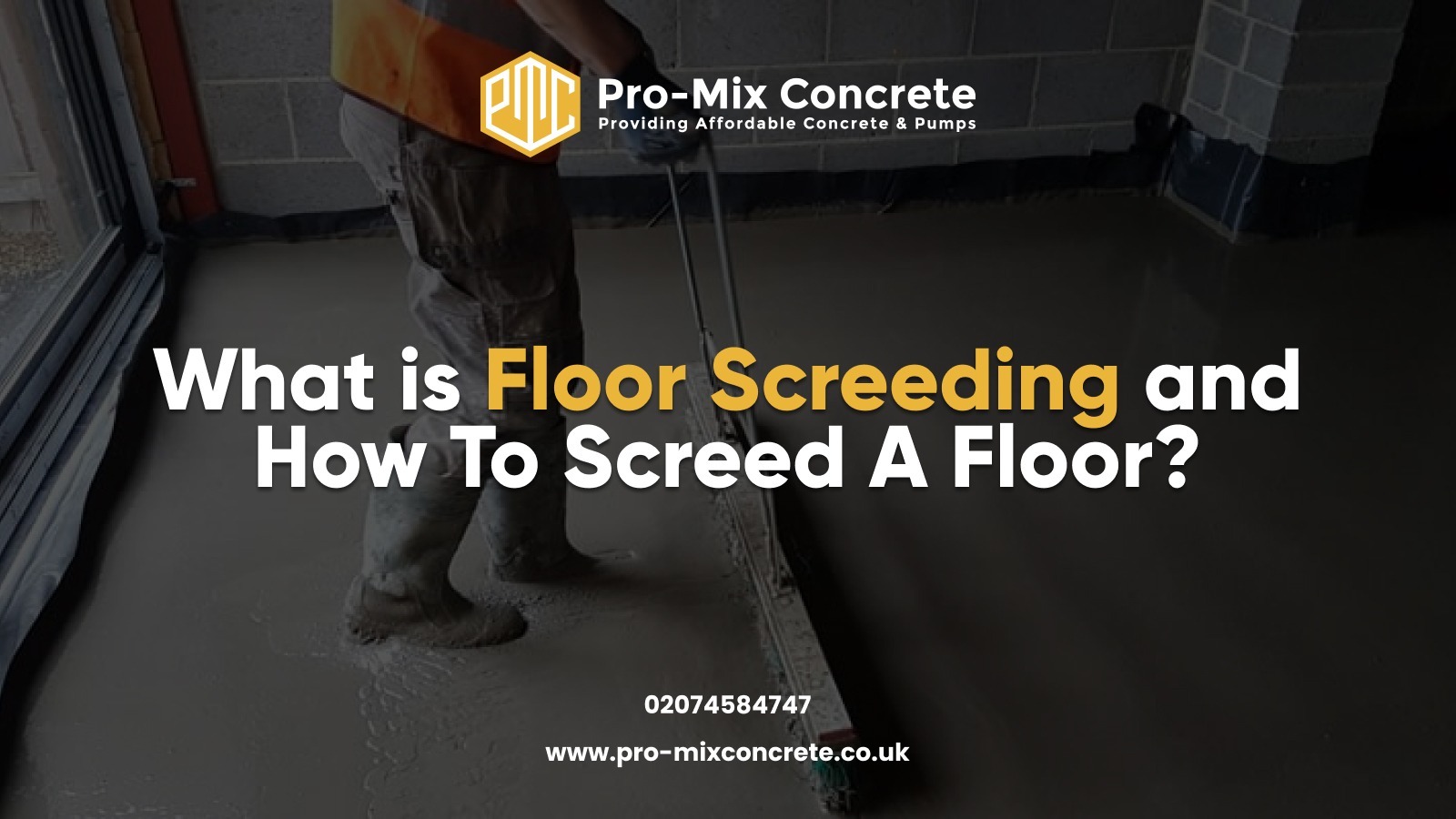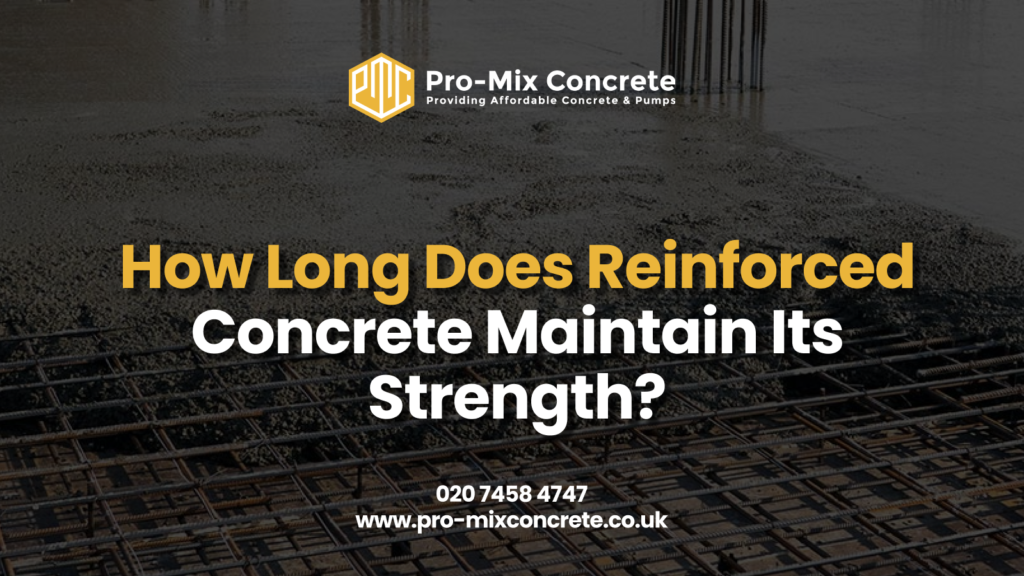Screeding a concrete floor is literally a foundational aspect of the construction industry. It is widely employed to create a smooth and level surface for various flooring materials. Be it tiles, hardwood, vinyl, or any other type of flooring, screeding means a flawless finish. However, this task needs absolute caution and expertise to achieve optimal results.
The quality of floor screeding directly impacts the durability and appearance of the finished floor. A properly screeded floor provides even support for floor coverings, prevents future issues like cracking or lifting, and ensures proper drainage in wet areas. Understanding the fundamentals of floor screeding is essential for achieving high-quality results.
Know The Different Types of Floor Screed In The Market
What is floor screeding? If you haven’t figured it out already, floor screeding is a crucial construction process that involves applying a layer of material over a concrete subfloor to create a smooth, level surface. This process is essential before installing the final floor covering such as tiles, wood, vinyl, or carpet.
The screed layer typically ranges from 50mm to 75mm in thickness, though this can vary depending on the specific requirements of your project and the type of screed used. The process requires precision and expertise to achieve optimal results.
There are several types of floor screed mix available, each with its own unique composition, properties, and benefits. Here are the most common types of floor screed mix:
Cement-based Floor Screed Mix
Cement-based floor screed mix is the most common type of screed in construction projects. It is made up of a mixture of cement, sand, and water, and it is poured onto the subfloor to create a smooth, level surface.
Cement-based floor screed mix is highly durable and can withstand heavy foot traffic. It is also resistant to wear and tear, making it an ideal choice for high-traffic areas such as commercial buildings and factories.
Calcium Sulphate-based Floor Screed Mix
Calcium sulphate-based floor screed mix is a popular alternative to cement-based floor screed mix. It is made up of a mixture of calcium sulphate binder, sand, and water, and it is poured onto the subfloor to create a smooth, level surface.
Calcium sulphate-based floor screed mix is known for its excellent thermal properties, a great choice for underfloor heating systems. It is also quick-drying and can be ready for flooring installation within 24-48 hours.
Polymer-modified Floor Screed Mix
Polymer-modified floor screed mix is a more advanced type of floor screed mix that is designed to provide additional benefits such as improved durability and strength. It is made up of a mixture of cement, sand, water, and a polymer additive, which enhances the properties of the screed.
Polymer-modified floor screed mix is highly resistant to cracking and can withstand heavy foot traffic. It is also resistant to moisture and can be used in areas where the subfloor is prone to moisture damage.
Type of Floor Screed Mix | Composition | Benefits |
Cement-based Floor Screed Mix | Cement, sand, water | Highly durable, resistant to wear and tear, ideal for high-traffic areas |
Calcium Sulphate-based Floor Screed Mix | Calcium sulphate binder, sand, water | Excellent thermal properties, quick-drying, great for underfloor heating systems |
Polymer-modified Floor Screed Mix | Cement, sand, water, polymer additive | Highly resistant to cracking, durable, moisture-resistant |
Preparing a Concrete Floor for Screeding
Preparation sets the basis for a successful installation and locks in the quality of the finished surface. Neglecting or rushing through the preparation stage can lead to unevenness, cracking, and poor adhesion of the screed. Take the time to thoroughly prepare the floor, and remove contaminants that could hinder proper bonding between the concrete screed or other substrate. This will yield superior results and minimise the risk of future problems.
Measuring the floor area
When questioning “how to prepare a floor for screeding?” This is where you start from. Calculate the dimensions of the space to determine the amount of screed required. Measuring the floor area allows for precise estimation of materials, so you have the right quantity of screed to achieve results. Having precise measurements also helps in planning the project’s logistics, including scheduling and budgeting.
Reinforcing or bonding the layer
If using an unbonded screed, reinforcing the layer with a steel mesh or fibres helps its strength and structural integrity. On the other hand, if opting for bonded screed, the underlying substrate needs to be prepared by exposing the aggregate and applying a bonding agent. Besides, this prevents delamination.
Ensuring a watertight site
Moreover, moisture can compromise the integrity of the screed, leading to issues such as warping, cracking, or mold growth. Address any potential sources of water infiltration, such as leaks or inadequate waterproofing measures, before proceeding with the screeding process. This may include:
- Conducting moisture tests
- Repairing leaks
- Also, apply appropriate waterproofing membranes or coatings to create a watertight environment.
Mixing screed for concrete floors
The process typically involves combining cement, sand, and water to create a workable mixture. In some cases, polypropylene fibres may be added to the mix to reduce the development of micro-cracks over time. Additionally, the proportions and consistency of the mix calls for careful attention, following manufacturer guidelines.
Step-by-Step Guide on How to Screed a Floor
Dividing the floor area
Dividing means a systematic approach and allows for better control over each section of the floor. You can focus on one section at a time. This might be the first thing anyone tells you on how to screed concrete or other surfaces.
Applying the first layer of screed
Once the floor area is divided, it’s time to apply the first layer of screed. This initial layer acts as a base for the subsequent layers and helps create a level surface. Further, the mixture is poured onto the prepared floor area and spread evenly using a screed board or a trowel. Workers should be diligent in achieving a consistent thickness and a smooth finish.
Levelling the floor with screed
Besides, use a straightedge or a screed bar to distribute the screed evenly across the concrete floor surface. Remove any excess screed by moving the straightedge in a back-and-forth motion, and you’ll fill low spots too. The goal is to achieve a flat, even surface.
There are two main types of screeds:
Self-leveling
As the name suggests, they automatically level themselves, spreading out and filling in any low spots. They are generally easier to work with.
Non-self-levelling:
They require manual levelling, as they do not flow and settle independently. They need more attention and skill to achieve a level surface.
Repeating the process for the entire floor
Treat each section as a separate entity, this is what all concrete screeding contractors would do. Now, it is crucial to maintain a uniform thickness and levelness across the entire floor to achieve a professional result. Taking the time and care to repeat the process for each section will contribute to a cohesive finished floor.
Floating the screed to remove imperfections
Floating would need to use a float or a trowel to smooth out any imperfections and create a refined finish. Moreover, the floating process helps to eliminate any ridges, bumps, or uneven areas that may have been left behind during the initial levelling stage.
Curing & Drying the Screeding On Concrete Floor
The curing period can vary depending on factors such as the type of screed used, ambient temperature, and humidity levels. Proper curing techniques are really important for the strength of the screeded floor. This means covering the screed with a protective layer, such as polythene sheeting or curing compounds, to prevent moisture loss.
While curing focuses on the chemical and physical changes occurring within the screed, drying refers to the evaporation of excess moisture from the surface. Further, this crucial step leads to avoiding moisture-related issues and preparing the floor for subsequent finishes.
Estimating the Cost of Screeding Concrete
- Keep the following factors in mind:
- Size of the floor area
- The type of screed being used
- The complexity of the project
- Any additional requirements
To obtain a quick quote for concrete screeding services, you can reach out to contractors or suppliers specialising in floor screeding. Also, many offer online quote request forms on their websites, making it convenient to submit your project details and receive a preliminary cost estimate.
Providing accurate information about the floor area, screed type, desired thickness, and any specific requirements will enable the professionals to provide a more precise quote.
Wrapping Up
Having the right professionals by your side can make all the difference. For further information, guidance, or to request a quote, reach out to Ready Mix Concrete London, the leading supplier in the industry. With our extensive expertise and top-quality products, we can provide valuable insights and support throughout your screeding project.
Moreover, we can answer any questions you may have, address your concerns, and provide you with accurate and personalized recommendations tailored to your unique project needs.
Frequently Asked Questions
Concrete screeding is often recommended to achieve a level surface, rectify any imperfections, or provide a smooth base for further flooring installations. It is particularly beneficial when dealing with uneven or rough concrete surfaces. However, the decision to screed a concrete floor ultimately depends on the project’s specific requirements.
The regular sand and cement one usually consists of a 1:3 to 1:4 ratio of cement to sand mixed with water to achieve the desired consistency.
Self-levelling screed and traditional screed differ primarily in their application and levelling properties. Self-levelling screed has a thinner consistency and is generally used to create a smooth and level finish over concrete or existing floors. Traditional screed, on the other hand, is manually applied and demands more effort to accomplish a level surface.
Traditional sand and cement screeds typically have a minimum thickness of around 25-40mm (1-1.5 inches).
Floor screeding Birmingham typically costs between £15-£30 per square meter, depending on:
- Type of screed (traditional cement is cheaper than flowing or fast-drying options)
- Required thickness
- Size of the area
- Amount of preparation needed
- Accessibility of the site
Cheshire homeowners and businesses can choose from:
- Traditional Sand and Cement Screed: Cost-effective and suitable for older properties in Chester, Nantwich, and Knutsford.
- Flowing Anhydrite Screed: Popular for new-builds, renovations, and underfloor heating systems.
- Fast-Track Screeding: Ideal for commercial spaces where minimal downtime is essential.
- Decorative and Polished Screeds: Growing trend in high-end residential properties and barn conversions.
- Dennis Broderick
- Dennis Broderick is the founder and owner of Pro-Mix Concrete Company, a trusted name in ready-mix concrete solutions across the UK. With over 20 years of hands-on experience in the construction and concrete industry, Dennis brings unmatched expertise, practical insights, and a commitment to quality on every project - from residential driveways to large-scale commercial developments.
 BlogDecember 22, 2025Guide To Concrete Finishes: 9 Different Types of Finishes
BlogDecember 22, 2025Guide To Concrete Finishes: 9 Different Types of Finishes BlogDecember 15, 2025Tips to Hire Concrete Pumps in London
BlogDecember 15, 2025Tips to Hire Concrete Pumps in London BlogDecember 12, 2025How Long Does Reinforced Concrete Maintain Its Strength?
BlogDecember 12, 2025How Long Does Reinforced Concrete Maintain Its Strength? BlogDecember 10, 2025Is Ready Mix Concrete As Good As Hand Casting?
BlogDecember 10, 2025Is Ready Mix Concrete As Good As Hand Casting?





